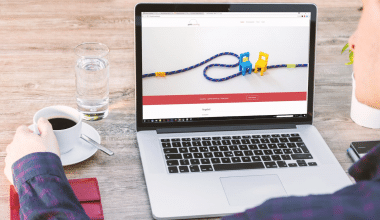You’ve probably heard the term “customer experience” (often abbreviated as “CX”) a thousand and one times before now. This thought, “Of course, we want to keep getting better and providing the best possible customer experience we can,” may have also crossed your mind on countless occasions. But, what does the term “Customer Experience” (CX) really mean? And, how can you make it better?
Well, you are in luck because this article will cover what CX means, its function, a strategy you can implement now, and major differences with the term, “UX”.
What is CX
CX basically refers to everything a company does to provide customers with superior experiences, value, and growth. And it’s essential in a time when a company’s customer service is just as, if not more, important than the goods and services it offers. It has become crucial for businesses to connect emotionally with their customers in a digital age where consumers review and divulge their interactions with brands in open forums.
What is a CX Tech
A CX Tech consists of all the various technologies required to integrate, orchestrate, automate, and manage customer interactions throughout the entire customer lifecycle in order to enable amazing experiences at scale.
We have omnichannel, CRM, automation, and AI. From strategy to design to installation and ongoing support, our curated set of best-of-breed technologies will simplify your life and improve your customers’ experiences.
What is a CX Strategy
CX strategy usually incorporates both qualitative components—such as a company’s mission or vision—and quantitative elements, such as customer data analytics. A customer journey map is a key building block of a successful customer experience strategy. That’s because it specifically defines every interaction in a customer’s relationship with a brand, from their first moment of awareness through their most recent transaction or engagement.
The customer experience (CX) strategy encompasses all of the plans that a company makes to ensure positive, high-quality customer experiences.
Why is CX Strategy So Important?
While customer experience can have organic elements, it’s not something that can simply be taken for granted. Companies need the right mix of planning, processes, people, and tools in order to deliver exceptional customer experiences. Customer experience strategy, then, is the glue that binds everything together. It defines not just what a company will deliver to customers, but also the when, where, how, and why. In the absence of a well-defined CX strategy, companies tend to take an improvisational approach, which can lead to mixed or poor results.
CX Meaning Marketing
The customer experience (CX) is the term used to describe how a company interacts with its clients at each stage of the purchasing process, including marketing, sales, customer support, and everything in between. It consists largely of all of a customer’s encounters with your brand.
Consumers desire a personal connection with their favorite brands as well as recognition and respect from the businesses they do business with. Businesses must make sure that their CX strategies can deliver individualized, pleasant encounters at every consumer touchpoint because CX has emerged as the key competitive difference.
CX Vs. UX
Contrarily, customer experience (CX) includes all of a person’s encounters with your brand. Overall experience, the chance of continued usage, and the likelihood of referral to others are possible metrics. In essence, UX is a component of a larger CX, however, CX includes some elements that are not related to a product that UX does not.
User Experience (UX) is the study of how users engage with your product and what kind of experience they have as a result. Metrics like success rate, error rate, abandonment rate, time to finish the task, and (since we deal in digital) clicks to completion are used to measure user experience.
What is the Function of CX?
CX transformation is driven by strong CX functionalities.
- Organizations must approach CX as a discipline if they want to develop CX in a way that produces quantifiable business results and consistently delivers the proper CX.
- The argument over whether a CX function should report to the CEO, CXO, or CMO misses the mark. For decisions to be made that will enhance the customer experience, CX departments must be in alignment with an executive champion.
- The customer experience is more than just a series of activities. It also emphasizes emotions. What do your current and potential customers think about your brand?
- Every time a customer interacts with you, you have the opportunity to strengthen or damage their opinion of you. So, there are crucial decisions to be made at each touchpoint, and the outcomes of those decisions affect how successful your organization will be.
What Does CX Mean in a Job?
You should have an in-depth understanding of customer engagement channels and prior experience in a related field to succeed as a customer experience specialist.
- Outstanding customer relationship management and a strong brand image are the hallmarks of a top-notch customer experience professional.
- Monitoring client experiences across online and physical channels, devices, and touchpoints are one of the responsibilities of a customer experience specialist.
- Improving customer service and brand awareness by working with IT developers, as well as the production, marketing, and sales teams.
- Coordinating customer experience plans with marketing campaigns and educating customers about new features and functionalities of products.
Social media users had excellent service levels available to them while having a tiny user base, which helped to raise customer expectations for timeliness and quality.
Brands invested more time and resources into their social customer care strategies as social media became more widely used and the number of people using it for customer service grew. However, in some cases, they struggled to meet customer expectations after being surprised by the sudden increase in the volume of inquiries.
We need to go back in time and examine how things have changed in the roughly 10 years since social media first appeared if we are to comprehend the potential of social media and the customer expectations surrounding it.
When businesses initially started looking into social media as a channel for connecting with consumers, their strategy was frequently metric-driven. The emphasis was on rapidly expanding social audiences and seizing a piece of the uncharted area that social media represented.
Several companies used the number of likes, comments, and shares as a success metric, often without confirming a direct link between high engagement levels and a strong bottom line. Driving experiences through social was not yet a top thought.
We have reached a stage where social media is a significant medium for brand-customer communication and where, at least among larger businesses, certain norms have been established.
So what does current best practice in social media look like? What should your starting point be when incorporating social media into your CX program?
#1. A Prompt Reply
According to the Conversocial research, more than a third (37%) of customers expect a response in less than 30 minutes when they ask a question or file a complaint on social media.
The requirement for speed is even more evident when looking at the entire set of responses from the study; 26% expect a response within 4 hours and 31% expect Since its inception, social media has played a significant part in bridging the gap between customers and businesses. But, those expectations have quickly changed over time.
#2. A Human Relationship
Although you might believe that automation is the key to quick responses, Conversocial’s statistics reveal that you should exercise caution before switching all of your agents over to chatbots.
According to the study, 59% of consumers believe that having a human response to their inquiry rather than receiving a “programmatic response” is “extremely significant.” Only 6% of respondents thought it was not important, while 35% said it was “somewhat important.”
#3. The Capacity for Client Service
While we are aware that providing excellent customer service is not the end-all and be-all of a successful social media customer experience, it is unquestionably a crucial element.
Consumers anticipate that brands will be prepared and eager to answer questions on social media. According to a study by SmartInsights, 63% of consumers anticipate firms to provide customer service through social media, while 90% admitted to using social media for this purpose in the past.
What is the 3 Component of CX?
#1. Ensure that Customers are Engaged Positively at all Touchpoints
You might picture a salesperson’s cheery, all-smiles style when you think about positivity. Nevertheless, a good CX entails much more; analyze each client interaction to make sure their experience is positive.
#2. Meet Client Expectations
As the shift to digital marketing has gained momentum, customer expectations have increased. More than ever, your audience is probably able to express what they like and dislike in public. Whatever commitment you make to your clients must be kept.
But how can you tell what they anticipate? Query them! Ask them questions on social media to find out what they prefer. Provide incentives like discounts or other promotions in return for survey responses. Researching the competition is also beneficial because that is the foundation on which their expectations will be based.
#3. Identify CX Problem Areas
It takes more than just meeting customer expectations to turn leads into brand advocates; you must surpass them. Think about the customer journey’s pain points and what you can do to alleviate them.
As an illustration, a business sells hardware that needs some setup. Most people don’t enjoy the process of getting a new technology to operate. The business has the chance to go above and beyond expectations and produce happy clients by devoting time and effort to making the installation procedure simple and hassle-free.
What are the Pillars of CX?
#1. Put the Customer First
Whether a business is client-facing or not, every action it takes should take the consumer and their experience into account. Although tactics like workforce management (WFM) and workforce optimization (WFO) are designed to boost productivity and a business’s bottom line, their ultimate goal should be to improve the customer experience. These solutions won’t achieve this goal if they are improperly applied or not integrated with current procedures.
#2. Recognize the Whole Customer Journey
Companies save a staggering amount of data on their consumers, including information on past transactions, accounts, and interactions. But if it is compartmentalized across several departments, systems, and communication channels, it might not always be simple to access or understand.
#3. Implement the Journey
Getting a comprehensive understanding of a customer is crucial, but without a communications platform to act from, it is essentially meaningless. Operationalizing the customer journey requires the implementation of an omnichannel customer care strategy that enables agents to use a variety of communication channels (such as voice, email, and chat) and access customer data from a single platform. Agents can more effectively address customer demands and inquiries with the most recent information if they have direct access to pertinent client details at the time of an engagement.
What is CX Professional?
Even more obvious than the differences amongst CX professionals are the commonalities. They are committed to collaborating across departments, presenting a customer-focused perspective, and providing tools to enhance the customer experience.
What CX Experts Believe
#1. Control is Less Valuable than Influence
Control is frequently described as having complete authority to choose the precise outcomes we choose in every situation. Surely, something like this would make our lives easier! We could wave our magic wands and take the actions we feel are essential to enhance the organizational culture and consumer experience.
Instead of having control, we do nonetheless have the ability to influence. Not the capacity to alter every habit or impediment, but the capacity to alter some of them. Although we have no control over every functional area’s procedures, we can influence change by offering customer input and visual representations of the customer experience. Although we can’t predict how a project will turn out, we can direct leaders toward a successful and enhanced result.
The relationship between the customer experience and quantifiable financial impact has long been studied. Although senior executives in some organizations are hesitant about the effect that CX has on customer spend, customer attrition, and cost of service, CX experts are aware of this link’s strength. It could be alluring to press on in the hopes that these executives will make the link after a few more project victories. But in order to fund the customer experience, there must be a compelling business rationale and immediate management support.
What is Cx in Product?
CX is a crucial component of any product’s success. The Full Product Experience (CPE) is a concept coined by Aha! co-founder and CEO Brian de Haaff describes the customer experience from a product builder’s perspective in his 2017 book Lovability. See it this way: Your goal should be to create CPE so that you can provide excellent CX.
Your product is more than just the gear you send out or the fundamental services you offer… The entire experience and the bond between you and the customer comprise the product. It fosters love, trust, and loyalty.
Conclusion
The customer experience is becoming more important to consumers than price and product quality. Enterprise businesses must follow suit in order to keep up. Your company can draw in and keep satisfied, devoted consumers by including these four pillars in your customer
Related Articles
- Customer Experience Strategy: (15 Tips To Improve In 2023+examples)
- Buyer’s Journey: Meaning, Stages & How to Implement in Sales Process
- MARKETING DEPARTMENT: Overview, structure, roles, expectations (+free tips)
- Best Customer Experience Management Software in 2023
- Retail Customer Experience: Definition & All You Need To Know






